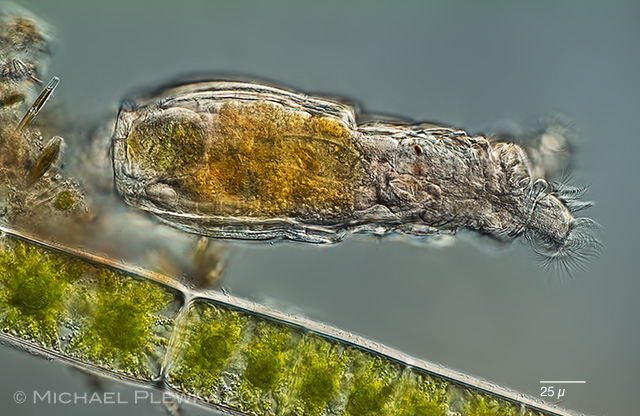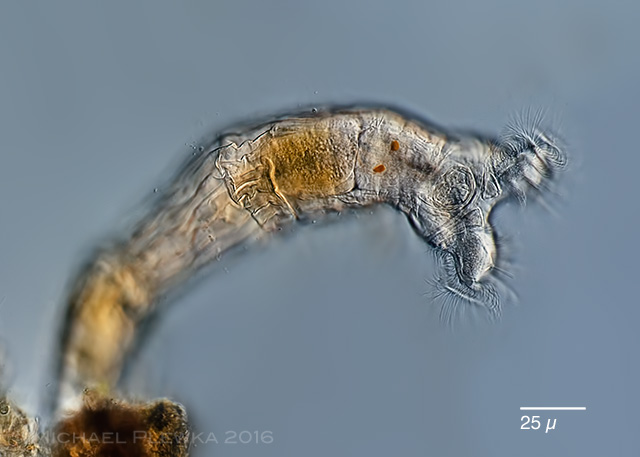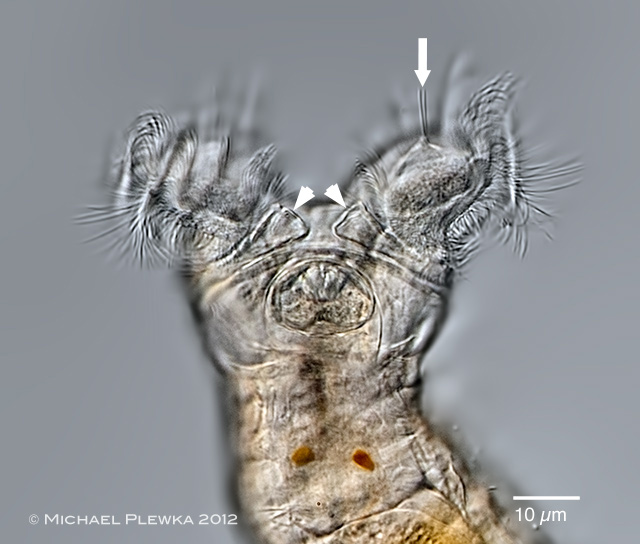| Philodina acuticornis-complex; whirling. In some population this species tends to have a reddish integument and can be confused with Philodina roseola. |
| |
|
|
| Philodina acuticornis-complex; left: crop of the above image. Focus plane on the bulges between upper lip and trochal columns. Right: head of the same specimen, brightfield. |
| |
 |
| Philodina acuticornis-complex; attached to a Zygnema filament, whirling. |
| |
|
|
| Philodina acuticornis-complex; left image, whirling; focus plane on the bulges between upper lip and trochal columns. Right: foot with characteristic spurs. |
| |
 |
| Philodina acuticornis-complex; another specimen from (2). |
| |
 |
| Philodina acuticornis-complex; crop of the above image, showing the bulges between upper lip and trochal columns (arrowheads). The bulges are triangle-shaped and do not reach the sulcus. Also visible is the papillae on the right trochal disc with two setae (arrow). (2) |
| |
|
|
| Philodina acuticornis-complex; toes of 3 different specimens. DONNER (1965) reports that P. acuticornis is the only Philodina species which keeps the dorsal toes extended (upper images). The lower left image shows the dorsal (dT) and ventral toes (vT) and the tips of the spurs. (3) So this might be a feature that separates P. acuticornis from P. roseola. Lower right: spurs of specimen from (6) |
| |
 |
| Philodina acuticornis-complex; specimen from (4) |
| |
 |
| Philodina acuticornis-complex; foot with spurs from above specimen (4) |
| |
| |
| Location: Hattingen, Wodantal, puddle, together with Cephalodella auriculata, Notommata cyrtopus, Notholca squamula (1); Anhausen near Augsburg, fishpond (2); Hagen, garden, bird bath (3); Hattingen Oberstüter (4); Recker Moor, NRW, trench (5); |
| Habitat: between algae (Zygnema sp.) ; Periphyton (2); detritus with green algae (3); moss on roof (4); between Sphagnum (5); |
| Date: 2.3.2014 (1); 09.08.2012 (2); 26.02.2016 (3); 01.11.2014 (4); coll.: 06.06. 2018; img.: 04.07.2018 (5); |
|
|
|